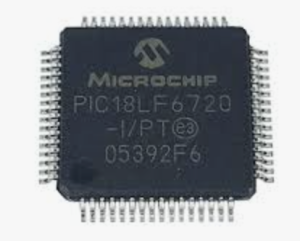
First-In, First-Out Integrated Circuits ( FIFO ICs) are essential components in digital systems, acting as buffers to manage data flow between subsystems with differing speeds or operating clocks. This guide explores their structure, types, applications, and design considerations, providing a thorough understanding for engineers and enthusiasts.
Table of Contents
ToggleBasic Structure of FIFO ICs
A FIFO IC comprises several key components:
- Memory Array: Stores data temporarily, organized into addressable locations.
- Write/Read Pointers: Track the next location for writing or reading data.
- Control Logic: Manages pointers and generates status flags.
- Flags: Indicate states like Full, Empty, Almost Full, or Almost Empty to prevent overflow/underflow.
Types of FIFO ICs
- Synchronous FIFOs: Use a single clock for read/write operations, ideal for systems with synchronized data flow (e.g., CPU-peripheral communication).
- Asynchronous FIFOs: Utilize separate clocks for read/write, enabling data transfer between independent clock domains (e.g., network interfaces). Gray code encoding of pointers mitigates metastability risks during cross-clock operations.
Key Applications
- Communication Systems: Buffering data in UART, SPI, or PCIe interfaces.
- Data Acquisition: Temporarily storing sensor data before processing.
- Audio/Video Processing: Managing bursty data streams in cameras or audio devices.
- Networking: Queuing packets in routers/switches to handle variable traffic rates.
Selection Parameters
When choosing a FIFO IC, consider:
- Data Width: Bits per word (e.g., 8, 16, 18 bits).
- Memory Depth: Number of words stored (e.g., 512, 1K, 4K).
- Operating Frequency: Max clock speed (e.g., 100 MHz).
- Power Consumption: Critical for portable devices.
- Interface Type: Parallel (common) vs. serial.
- Additional Features: Parity checking, retransmit capability.
Advantages and Challenges
- Pros:
- Decouples data producers/consumers, reducing processor load.
- Prevents data loss during speed mismatches.
- Simplifies synchronization in multi-clock systems.
- Cons:
- Introduces latency proportional to buffer depth.
- Asynchronous designs require careful handling of metastability.
- Over-sizing FIFOs increases cost and power usage.
Example FIFO ICs
| Model | Vendor | Depth x Width | Type | Features |
|---|---|---|---|---|
| SN74ACT7201 | Texas Instruments | 512×9 | Async | 3.3V/5V operation |
| CY7C4255 | Cypress | 1Kx18 | Sync/Async | Retransmit, parity |
| IDT72V36100 | Renesas | 4Kx18 | Async | Low power, 5V tolerant |
Design Considerations
- Depth Calculation:
Depth=(Write Rate−Read Rate)×Burst DurationDepth=(Write Rate−Read Rate)×Burst DurationExample: For a 100 MB/s write rate and 80 MB/s read rate over 1 ms, depth = 20 KB.
- Clock Domain Crossing: Use Gray code counters in async FIFOs to ensure single-bit transitions, minimizing metastability.
- Flag Management: Monitor Almost Full/Empty flags to initiate flow control (e.g., pausing data sources).
Troubleshooting Common Issues
- Overflow/Underflow: Adjust FIFO depth or implement hardware flow control (e.g., Ready/Valid signals).
- Metastability: Use dual flip-flop synchronizers for async signals.
- Data Corruption: Verify timing constraints and signal integrity.
Future Trends
- Integration: Combining FIFOs with error correction (ECC) or compression.
- Low-Power Designs: Targeting IoT and edge devices.
- High-Speed Interfaces: Supporting 5G and AI-driven data rates.
Conclusion
FIFO ICs are indispensable for managing data flow in modern electronics. By understanding their operation, types, and design nuances, engineers can optimize system performance and reliability. As technology evolves, expect FIFOs to integrate smarter features while maintaining their core role in bridging timing gaps.
- Everything You Need To Know About Limit Switch - May 21, 2025
- Everthing You Should Know About Rheostat - May 20, 2025
- Everything You Need To Know About Reversing Contactor - May 19, 2025






